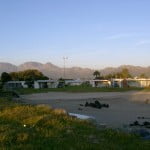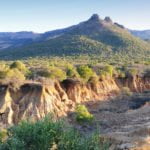The demise of the Amazon rain forest is just a breath away
At 2.6 million square miles, the South America’s Amazon rain forest is a little less than the size of the United States. It is fringed by Bolivia, Peru, Colombia, Venezuela, Guyana, Suriname and French Guiana, but 70% is within Brazil. The Amazon River slices it from west to east where it flows into the Atlantic.
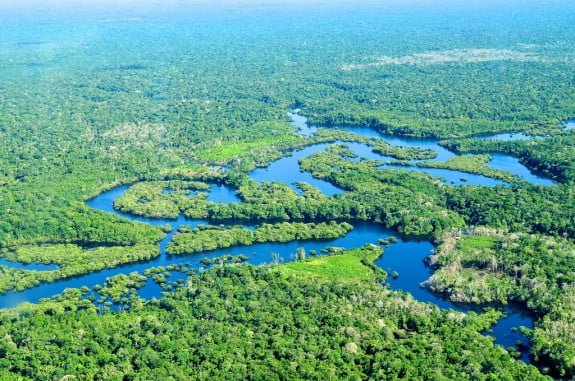
Situated on the equator, the doldrums, it has an average annual precipitation of 50 to 260 inches a year, the highest and most extensive in the world (only a small area in Africa competes).
The tropical rains pour abundantly, but the trees release moisture that returns as rain and provides nearly half of the rainforest’s water needs. Emitting significant amounts of oxygen that animals require for their own metabolism, the Amazon rain forest is a blessing to all life, including humans, or so you would think.
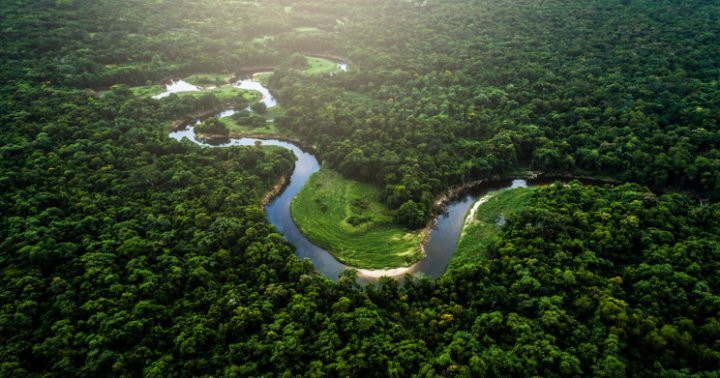
Although the indigenous people living there have treated the forest with reverence, modern, civilized people have come to destroy it for their profit. Today, the Amazon rain forest is under attack.
Once it was entirely rain forest, with mahogany it’s most coveted tree. Its trees, as well as the plants that are used as pharmaceuticals, are what first attracted corporations, the principle enemy of the Amazon rain forest. With its wealth of timber and global demand, the rain forest offered irresistible profits to logging companies.
From the 1970s to the present day, 20 percent of rain forest trees have been felled by power chain saws. Twenty years from now, another 20 percent may suffer the same fate. When that feat is accomplished, the rain forest may not produce enough rain from its own moisture and the remaining flora could die from the ensuing drought.
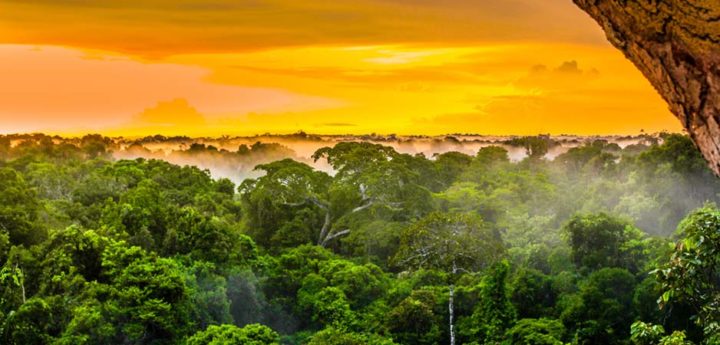
Even with its high rainfall levels, the trees are not secure. Drought has occurred in the Amazon Basin. It did in 2005. With global warming changing weather patterns, another drought is likely again. Without the rain, the Amazon Basin could become the largest tinderbox in the world.
A mere forty years ago the rain forest was standing tall, despite occasional wildfires that were unable to prevail beneath the plentiful rain. With the reduction of rain, the trees are now more at risk.
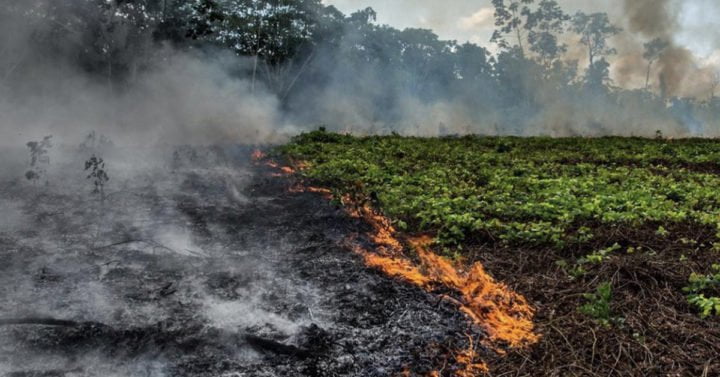
While half of the fires were started unintentionally, the other half are fully intentional; burning trees is the easiest way to clear land to use for planting.
Because a new predator, the farmer, has joined the loggers, particularly the soy farmers and cattlemen, vast tracts are being burned. So extensive is the burning, the carbon dioxide released into the atmosphere by these fires has made the Amazon Basin a major source of greenhouse gases and an accelerator to global warming. Once a source of the oxygen, the Amazon Basin is starting to choke the animal kingdom.
With its limited resources, the government of Brazil is attempting to put the brakes on this horrendous free fall. Laws protect millions of acres of forest and permits and licenses are required to use the resources of the Amazon Basin.
Millions of dollars have been collected in fines, and hundreds of sawmills and factories of been shut down. These measures have helped, but not stopped the deforestation and urbanization of the forest.
Without the human resources to enforce its environmental laws, Brazil is losing the battle against those land grabbers that have no greater care than for their own enrichment, overlooking the catastrophic results for the rest of us.
For some time now we’ve known these facts, and yet the Amazon rain forest continues to decline. For we who are not Brazilians, we can do little but elect national leaders who are willing to put on the pressure and supply the money required to save this precious forest.
We can also refuse to buy products that are derived from the Amazon rain forest, including Brazil’s timber (50% consumed by the U.S.), soy (47% to the U.S.), and cattle (7% to the U.S.), but we must also temper that with consideration for the men and women of Brazil who work for legal businesses.
At least, with the next breath we take, we should remember the Amazon rain forest and give thanks.




